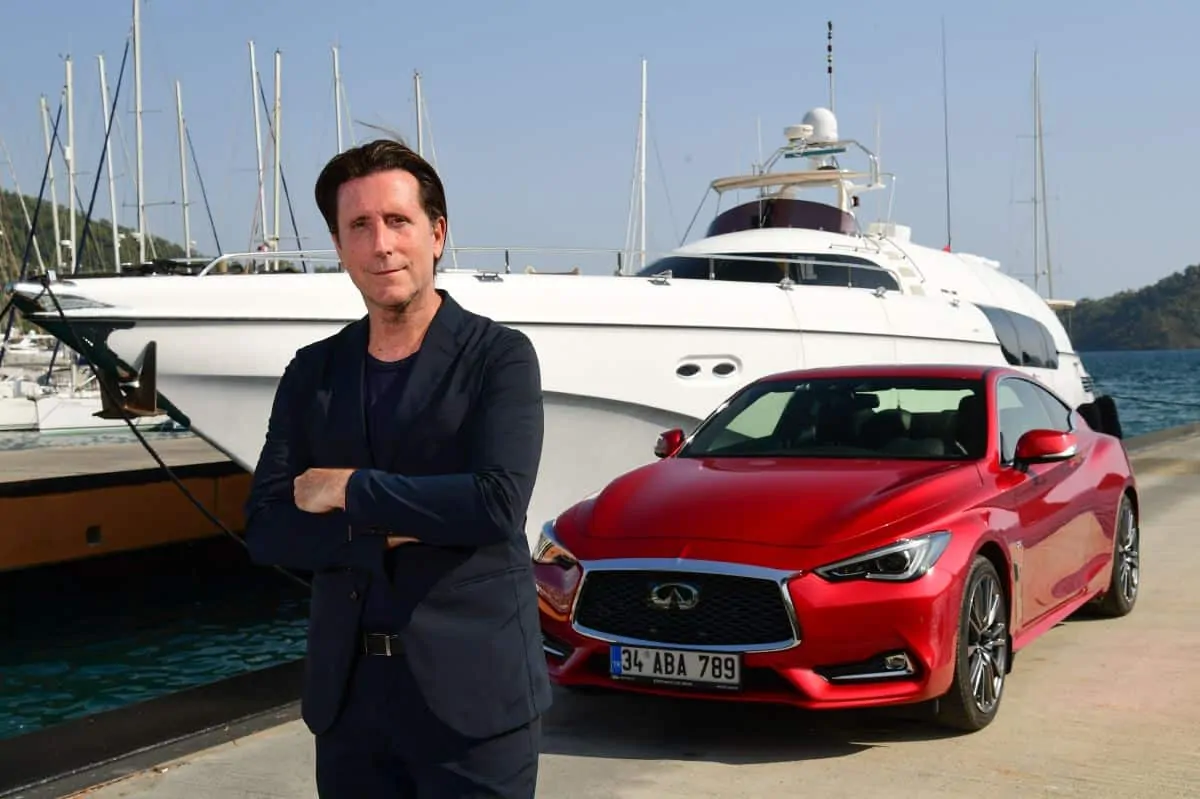Longtime Nissan and Infiniti designer Alfonso Albaisa took over as Nissan Motor Co.’s Global Vice President of Design earlier this year, replacing Shiro Nakamura in the top job. He’s also a keen sailor, with a yacht of his own. Docked in California, he routinely takes the vessel out on the Pacific Ocean, alone, where he’s at one with nature.
This summer, Albaisa had a chance to visit a project he worked on years before acquiring this childhood dream: the Motali yacht, which was commissioned by a Turkish client during his second year working at Nissan. He’d never seen the finished product in person before.
“I want to harness the power and beauty of nature in my designs,” says Albaisa, “But no matter how big your ambition, I’ve also learned that as a human your physical presence on the ocean is very small. I want to capture this sense of tranquility and humbleness too.”
Albaisa’s love of the ocean can be traced back to his time growing up in Miami. Having moved to the city with his parents from his native Cuba, he’d cruise the coastline on a six-meter powerboat with his brother in the 1970s, stopping to sleep on islands and drifting off to the sound of the waves.
When a client approached Nissan’s design facility in San Diego (NDA) to design a 33-meter, three-story luxury yacht, Albaisa was the perfect designer for the job.
“Creating Motali was a chance to combine my lifelong passion with the job I love,” Albaisa says of the day in August 1990, when he was presented with the brief. “He told me ‘imagine Motali backing into its mooring at Monaco. The rear view of this vessel should be like no other’. It was an exciting but extremely challenging brief.”
Motali’s design features a bullet-like expression with romantic tapering at the stern that tumbles inwards, similar to the classic vessels of the 1950s, done in a completely modern way. Guests enjoy a fundamentally different shaped yacht, with curved windows downstairs, creating a unique view from the inside out. The fact that it still looks modern to this day — some 26 years later — is a testament to the longevity of the design.
“I’ve always been captivated by the look of yachts at rest, so having the chance to create my own vessel was very exciting,” says Albaisa. “With any yacht, the look and shape are so important. For Motali, it was clear from the beginning that the most important thing was to create something truly beautiful.”
While Albaisa could draw on many of the design and creativity skills honed during his day job, the key challenge of moving from four wheels to none was the sheer sense of scale.
“A car can be treated as a single thought with one gesture supported by details,” Albaisa says. “Yet on a yacht of Motali’s size, the gesture is dictated by the architecture — more like a building than a vehicle.”
Unlike with a building, however, Albaisa had to look beyond the vessel itself during the design process.
“As someone who has spent a lot of time sailing, I knew the views out Motali’s windows would be as important as the vessel itself. On a yacht, the surrounding environment is not static in the same way it is for a building. Plus, it’s nearly always majestic — whether you’re looking at an island, the open ocean, a city harbor or the lights of a coastline.
“The exterior of Motali had to fit seamlessly into all those surroundings while the inside needed to be more than just an interior. It’s designed to give passengers an experience of travel.”






